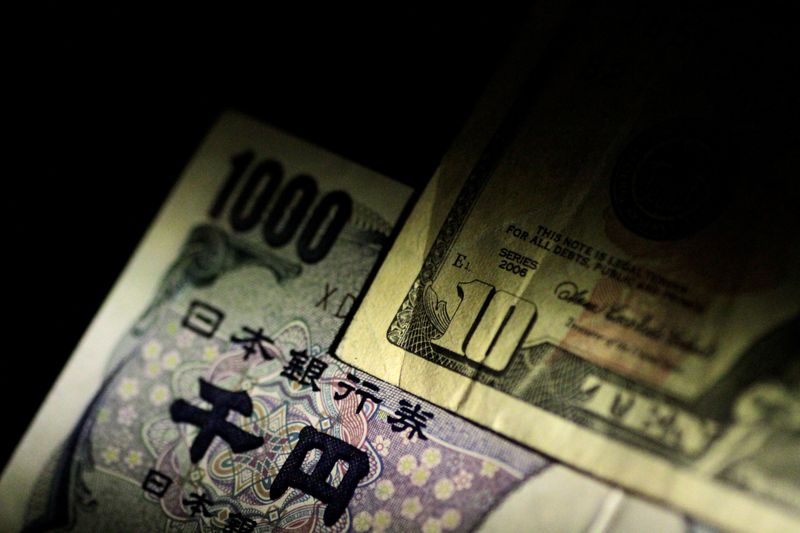Samuel Indyk and Ankur Banerjee
LONDON (Reuters) – The dollar weakened slightly on Monday but remained near a nearly eight-week high, while the yen briefly edged higher, lurking near the 160 level that had earlier prompted verbal warnings from Japanese authorities.
The yen fell to 159.94 per dollar in early trade, its weakest since April 29, when the yen hit a 34-year low of 160.245, prompting Japanese authorities to spend an estimated 9.8 trillion yen to support the currency.
A brief rise in the currency this morning in Europe saw it trade as high as 158.75 to the dollar, with analysts saying the market is on edge given current levels.
“It certainly didn’t look like an intervention… however, it does speak to how nervous the market probably is about the prospect of intervention,” said Michael Brown, senior research strategist at Pepperstone.
“I think that as long as further easing is not particularly rapid or disorderly, the MoF (Ministry of Finance) is unlikely to intervene.”
The yen was last seen strengthening slightly at 159.54 per dollar.
Earlier, Japan’s top currency diplomat, Masato Kanda, said authorities would take appropriate steps if foreign currency moves excessively, and that adding Japan to the U.S. Treasury watch list would not limit their actions.
The yen came under fresh pressure following the Bank of Japan’s (BOJ) decision this month to delay cutting its bond-buying stimulus until its July meeting. In June it fell by 1.5%.
A roundup of views at the Bank of Japan’s June policy meeting on Monday showed some policymakers called for a timely rise in interest rates as they saw the risk of inflation beating expectations.
The yen, which is highly sensitive to U.S. Treasury yields, has fallen more than 10% against the dollar this year due to wide differences between Japanese and U.S. interest rates.
AHEAD TEST FOR INFLATION
The focus this week will be on the Personal Consumption Price Index (PCE), which comes out on Friday.
Economists polled by Reuters expect annual growth in the index to slow to 2.6% in May. The soft indicators are likely to support bets on a rate cut as early as September, for which futures are currently pegged at a 70% chance.
The index, which measures it against six major currencies, was last at 105.56, retreating from the nearly eight-week high of 105.91 it hit last week.
Politics will also be in focus this week, with the first US presidential debate on Thursday and the first round of voting in France’s elections over the weekend.
“In the first round of elections in France and the US presidential debates, you’ll see a lot of defensiveness,” said Simon Harvey, head of currency analysis at Monex.
“While there is a sense of calm on the dollar this morning, political risk remains a decent source of strength for the dollar and we expect the dollar index to finish the week higher.”
The euro, which has been under pressure since French President Emmanuel Macron announced early elections earlier this month, rose 0.3% to $1.0727 but was still down 1.2% in June.
France’s far-right National Rally party (RN) and its allies led the country’s first round of elections with 35.5% of the expected votes, an opinion poll released on Sunday showed.

North Carolina lawmaker Jean-Philippe Tanguy, widely seen as the most likely candidate to head the Treasury if the party wins to form a government, told Reuters the North Carolina government would adhere to European Union financial rules.
Meanwhile, the spot yuan traded at 7.26 per dollar, near its lowest level in seven months, amid strong dollar strength and concerns about weakness in the world’s second-largest economy. [CNY/]


